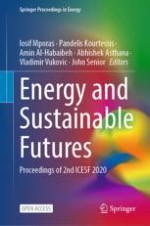4.1 Introduction
4.2 Methodology
4.2.1 System Design
4.2.2 Boundary Conditions and Assumptions
4.2.3 Materials and Analysis
Base Case | Variation 1 | Variation 2 | Variation 3 | Variation 4 | |
|---|---|---|---|---|---|
Melting temperature | 45 °C | 45 °C | 45 °C | 45 °C | 45 °C |
Latent Heat | 200 kJ/kg | 10 kJ/kg | 500 kJ/kg | 200 kJ/kg | 200 kJ/kg |
Density | 800 kg/m3 | 800 kg/m3 | 800 kg/m3 | 600 kg/m3 | 1000 kg/m3 |
